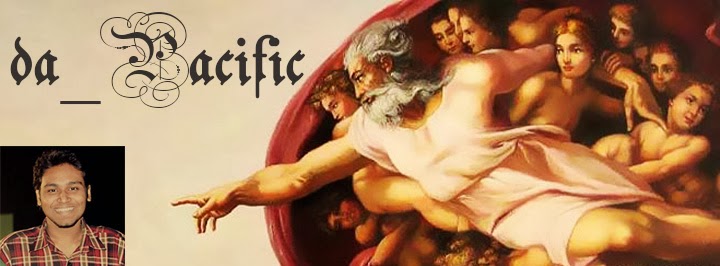Imagine yourself, on a bright sunny autumn morning,
humming to the melody of the bees, as you ride on a bicycle along the narrow
stretch of soil that winds though a flowering mustard-field, pale like melting
gold as it sweeps across miles and miles of even land. Sounds quite romantic, like one of those 70’s
scenes, doesn’t it?
Now replace the scene with a divine stretch of untarnished tarmac that
seems infinite even as your speedometer reads …100 …120 …130 kmph, the surroundings
that consists of groves of trees, small establishments, empty land and not to
forget – the cattle; all obliterated even before your eyes can capture them!
You can literally feel the adrenaline rush to the remotest corners of your body
while you stay focussed on the track, wafting you way through the kamikaze
motoring. The humming of the engine fills you with ecstasy, as the needle
crosses 9000 rpm on the tachometer!
That’s exactly how I felt on my journey from Kolkata to Durgapur on
the cloudy morning of September 9, 2012. My ride – a blue YAMAHA YZF-R15 ver
2.0
The history of
motorcycles can be traced back to as early as the second half of the 19th
century. The first steam powered motorcycle, the Michaux-Perreaux steam
velocipede, can be traced to 1867, when Pierre's son Ernest Michaux fitted a
small steam engine to one of the 'velocipedes'. In 1894, the Hildebrand &
Wolfmüller became the first motorcycle available to the public for purchase. Companies
such as Harley Davidson, Indian Motorcycle Company, BMW, Royal Enfield,
Triumph, BSA, Norton, and Piaggio were among the early producers. In
time, the motorcycle became a recreational machine for sport and leisure, a
vehicle for carefree youth, not essential transportation for the mature family
man or woman, and the Japanese were able to produce modern designs more
quickly, more cheaply, and of better quality than their competitors. Their
motorbikes were more stylish and more reliable. Honda introduced their
SOHC inline four-cylinder CB750 in
1969, which was inexpensive and immediately successful for the
across-the-frame-four engine configuration as a design with huge potential for
power and performance. Today the Japanese manufacturers, Honda, Kawasaki,
Suzuki, and Yamaha dominate the large motorcycle industry. In India, Bajaj
Auto, Hero MotoCorp, LML, TVS and Mahindra & Mahindra Ltd control a
large part of the industry due to their performance and cost effectiveness.
Be it the John
Abraham’s Hyabusa or Ghost Rider’s V-Max200, superbikes have always been a
craze among youngsters. And that’s where the manufacturers have done wonders by
packaging such power and performance all under the 150-300 cc hoods! Starting
from the Kawasaki Ninja 300, we have been obliged with bikes like the Honda
CB250r, Hyosung GT-250R, KTM Duke 200, Bajaj Pulsar 200NS and Hero
Karizma ZMR. But bikes like the Yamaha YZF-R15, Honda CB150r, Suzuki GS
150R, Yamaha Fazer and Bajaj Pulsar 150 have completely
revolutionised the 150 cc segment of biking experience.
If my decision to purchase a R15 among other 150cc bikes is put to a
debate, then this is all that I have got to assure you the fidelity of my
choice…
First and foremost comes the stylish
sporty look that it flaunts with its dual headlights and the angular tail-lamp
integrated into the aluminium deltabox frame, on whose high end lies the
pillion seat. The chassis is a lower than other bikes (seat height of 800 mm),
making it easier to handle for not-so-tall riders. In spite of the front and
side cowls included in the aerodynamic design that adds to the engine cooling,
the bike weighs 136 Kg only, which provides an edge to its razor sharp handling
and performance. Coming to tech-specs, it is powered by a single cylinder,
4-stroke SOHC liquid cooled engine that churns out a power of 17PS @8500 rpm
and a maximum torque of 15 Nm @7500 rpm. Mounted with radial tubeless tyres
that provide excellent road gip and steering capabilities on all types of
terrain, the wheels (wheelbase of 1,345 mm) are equipped with hydraulic single
disc brakes that immediately bring your drive to a halt. Now comes the best
part – the telescopic monocross suspension, which provides soft cushioned riding
comfort as well as excellent damping under heavy loading conditions. Last but
not the least comes fuel economy. The PGM-FI (programmed fuel injection) system
consisting of 4 sensors and a ECU calculates the optimum fuel supply to the
combustion chamber based on the engine operations and air intake, thus
delivering excellent response, fuel efficiency and a comfortable ride. Its
mileage varies between 35 to 40 kmpl.
Bikes are a form
of passion and fashion among modern day youngsters, especially the stylish and
the sporty ones. And why shouldn’t they be? After all not many things can
replicate the thrill that I cherished at 132 kmph @ 9200 rpm on the Grand Trunk
Road. The wind seemed to push me off the seat. My fingers almost went numb, yet
they held on to the handle with an unexplainable force. Even the speckles of
sand on the way seemed to sting my open feet. (For a moment I felt my feet
would turn into those like that of Sandman!). The only unpleasant part of my
journey was the heavy rain that I faced during the second half of my journey.
The drops hit my arms like bullets from the sky and the impulse really seemed
to burn into my skin!
All in all… What a fantabulous experience!!!

